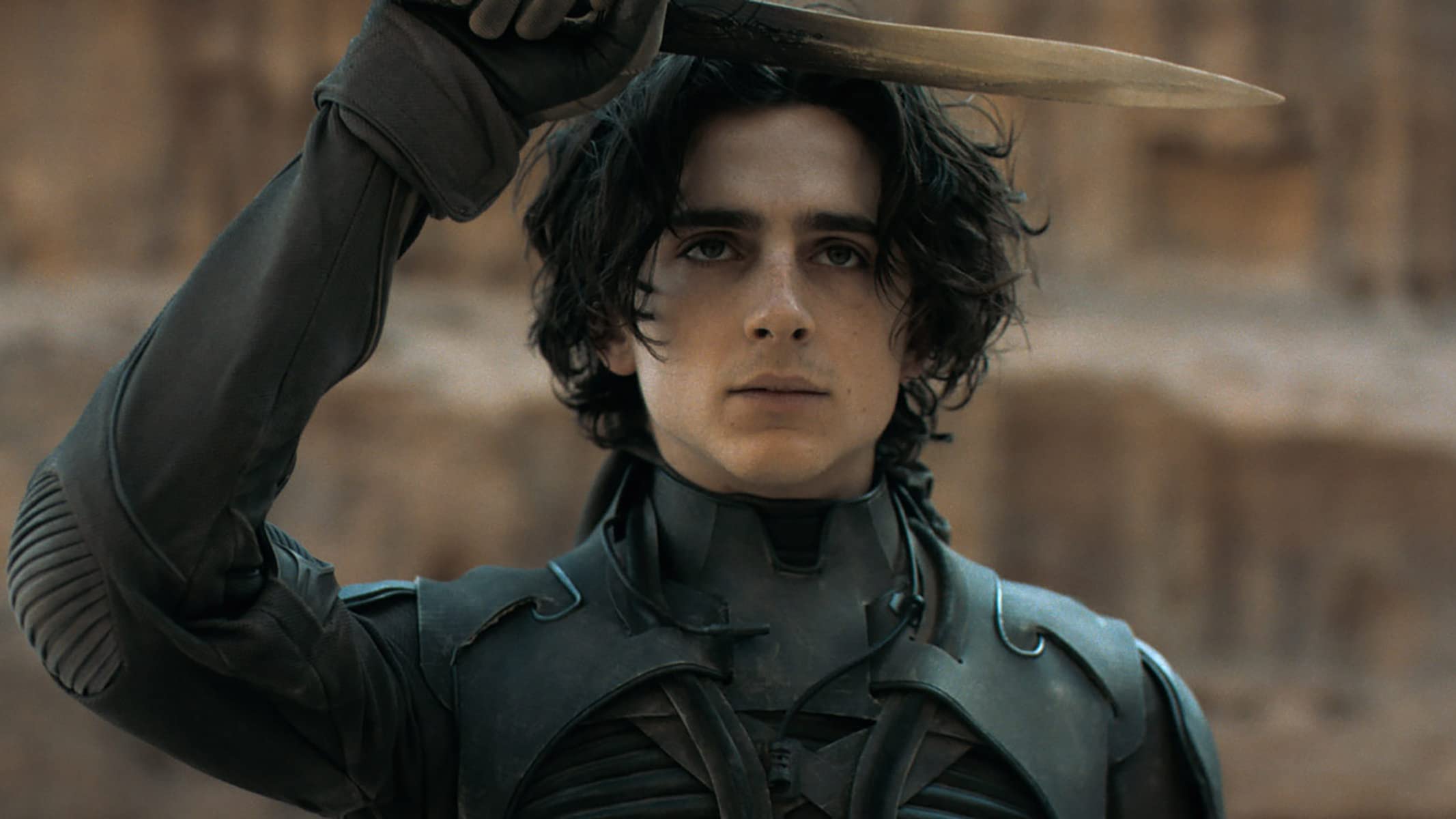
By Emma Hirschauer
A mix of sand and spice swirls in the air as Dune opens onto a world of war and conflict. The desert is nothing if not cruel, and it will take everything from each character we meet. Dune is a movie of epic proportions, obvious from the get-go with its huge fleets of warships and sprawling armies that make the cinematography feel impossible. Undeniably, it is a tactile and rewarding experience.
The film follows Paul Atreides (Timothee Chalamet), a boy born into turbulence. His father, Duke Leto Atreides (Oscar Isaac), prepares to take Arrakis, a desert planet filled with the most valuable substance in their world, the spice, from Harkonnens. The Emperor feels threatened by the Harkonnens as they grow rich, richer than anybody else in the galaxy, and so the House of Atreides is sent to take over the planet. Paul faces other troubles, though, a power long-awaited that he cannot understand, given to him by his mother Lady Jessica (Rebecca Ferguson). Lady Jessica was once a disciple of the powerful Bene Gesserit, a group of space witches that shape the future of the universe.
The most undeniable feature of the movie is its stellar cast, with big names in Hollywood such as Zendaya as Chani, a member of the Fremen, one of the natives of Arrakis; Jason Momoa as Duncan Idaho, Duke Leto’s right-hand man and Paul’s friend; and Stellan Skarsgard as the despicable head of the Harkonnen household, Vladimir Harkonnen. Each actor delivers a terrific performance, making each character seem convincing and dynamic in the near-impossible situations they are put into. There are missteps in this right, however, with odd spots of chemistry between actors throughout the film. One such example is felt between Paul Atreides and his mother, and some scenes come across as strangely romantic.
Written by Director Denis Villeneuve, Jon Spaihts, and Eric Roth, the movie tackles a mammoth of a plot. In this right, it only partially succeeds, as the film can tend to drag throughout some of its slower points. The beginning especially suffers this problem, as the ramp-up that drives the movie, in the beginning, is bogged down by its very nature. The ending feels nearly non-existent, and even with the promise of a sequel, it leaves viewers feeling unfulfilled, especially given the slow build-up towards what should’ve been an epic moment. Still, the film does right by its characters, especially Paul, and his growth is a fascinating metamorphosis as he grapples with his growing power.
Additionally, Dune’s visuals are stunning, with sweeping shots that illustrate the scale of the plot and each moving piece it depicts. The movie transports its viewers in this way, allowing us to watch empires fall and impenetrable fortresses burn. Its depiction of the sandworm, a terrifying worm-like creature that stalks the desert and strikes at the sign of sound, is especially indicative of this, and each audience member can practically feel the monster looming on the horizon when it appears on the screen.
Viewing Dune for the first time in theaters feels like being transported to a new world. Among its visuals, the film’s sound design is powerful and thoughtful. Many hours of research were done for each score and sound. Supervising Sound Editor & Sound Designer Theo Green reports that he and his team even planted microphones under the sands of Death Valley to perfectly mimic the sounds of the desert. The score sounds like an ancient, powerful voice, long slumbering in the dark, but not for long. Each element of sound is stunning and brings a new kind of art to the film.
Many films attempt the kind of grandeur that Dune achieves. It succeeds in taking one of the most complex and highly regarded sci-fi plots of all time and brings it to staggering heights on the big screen. The film is buoyed by its actors as they valiantly carry the weight of the larger-than-life world their characters operate in. It is a film worth experiencing and should be on must-see lists everywhere.